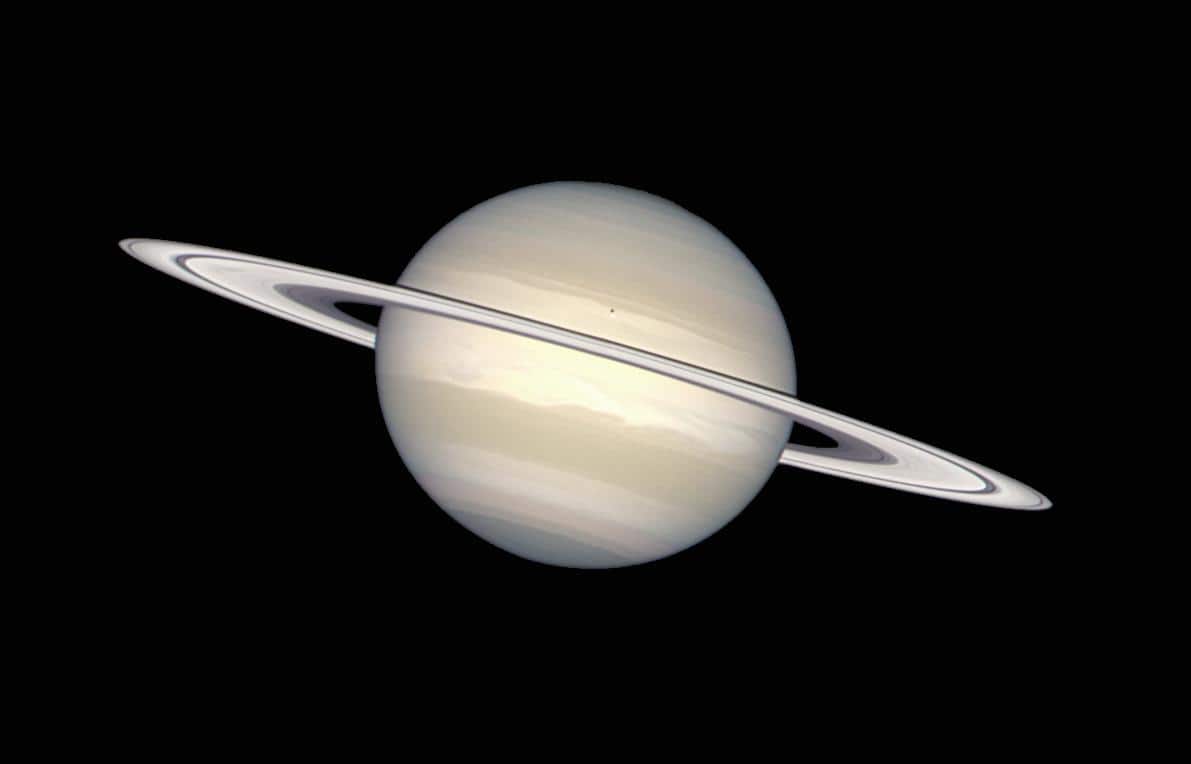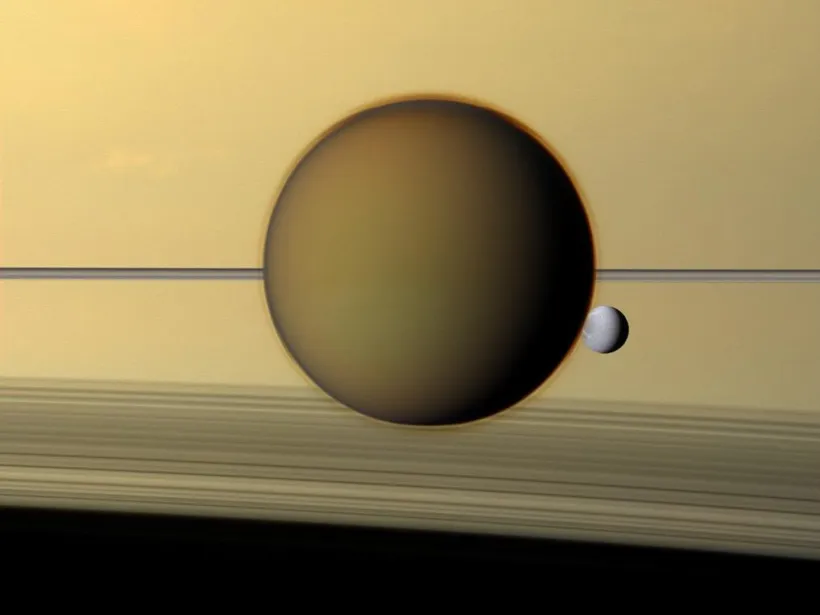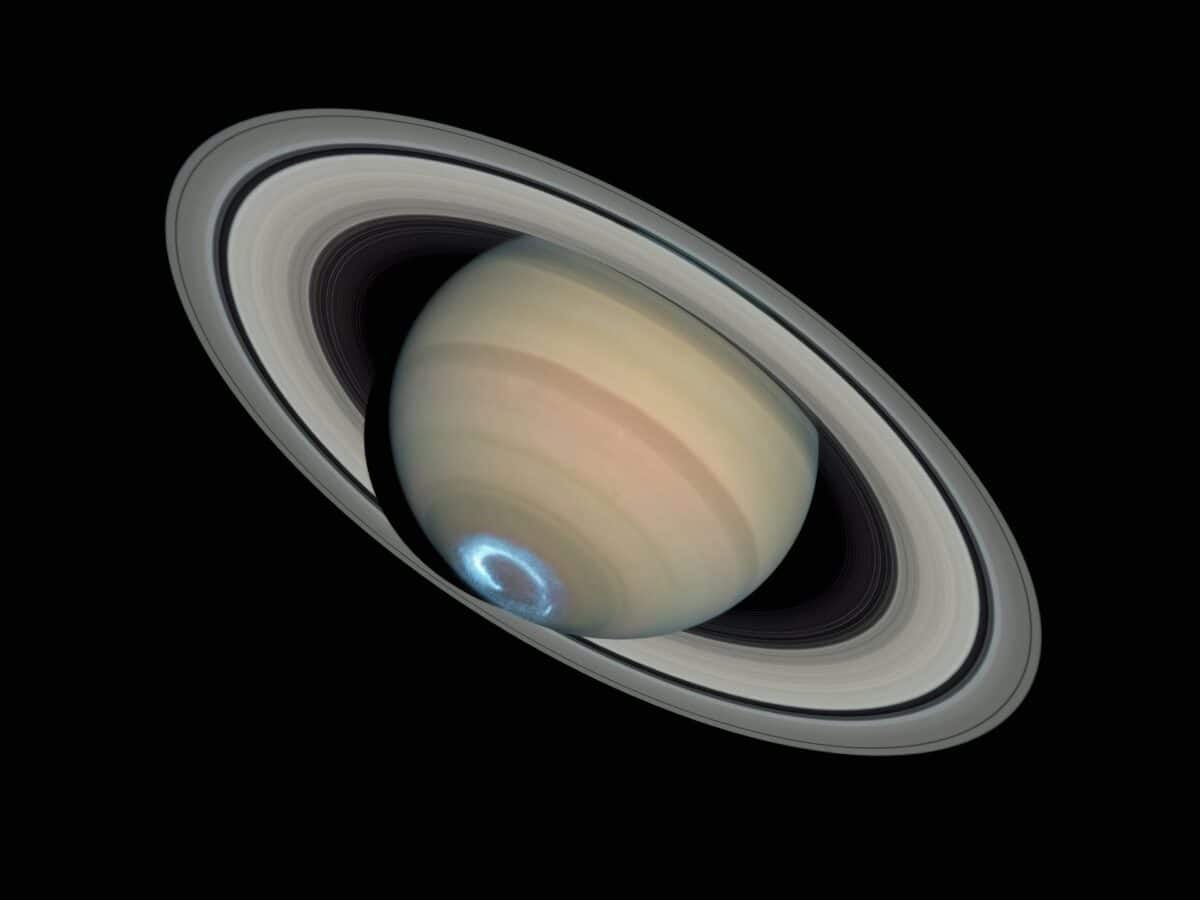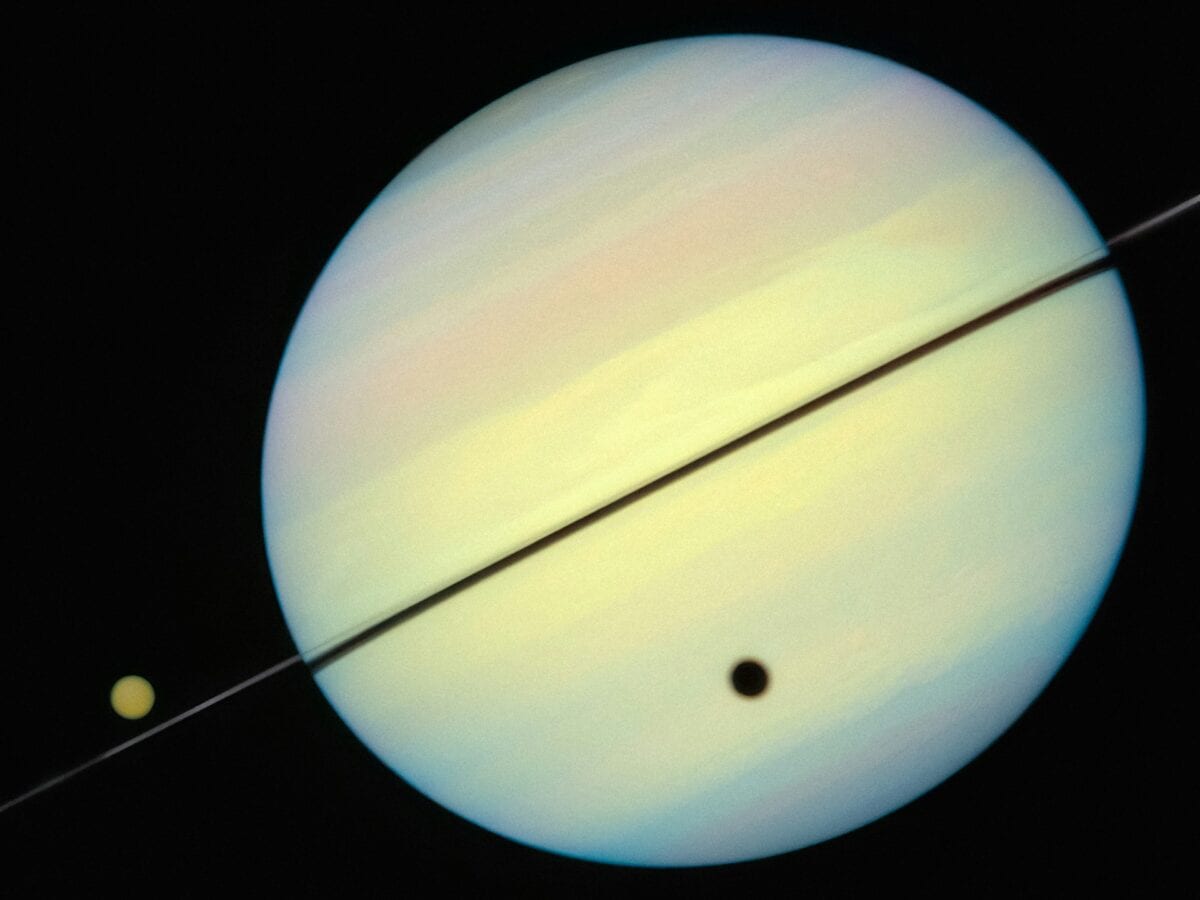Saturn, the sixth planet from the Sun, is renowned for its magnificent rings and its diverse collection of over 80 moons. These natural satellites vary tremendously in size, composition, and characteristics. Among these moons, several have captured scientists’ attention due to their potential to harbor liquid water beneath their surfaces. The presence of subsurface oceans on these celestial bodies raises profound questions about the potential for extraterrestrial life in our solar system. As we explore these icy worlds, we’re uncovering evidence that suggests some of Saturn’s moons may indeed contain vast oceans hidden beneath their frozen exteriors, making them prime candidates in our search for habitable environments beyond Earth.
Enceladus: The Most Promising Candidate

Among Saturn’s moons, Enceladus stands out as the most compelling evidence for a subsurface ocean. This small moon, only about 310 miles (500 kilometers) in diameter, has astonished scientists with its dramatic geysers erupting from its south polar region. The Cassini spacecraft, during its mission from 2004 to 2017, flew directly through these plumes and analyzed their composition. The results were groundbreaking: the plumes contain water vapor, ice particles, salts, and organic compounds. This material appears to originate from a global liquid water ocean beneath the moon’s icy crust, estimated to be about 6 miles (10 kilometers) thick. The mechanism driving these plumes involves tidal heating—the gravitational forces from Saturn flexing Enceladus’s core and generating heat, which maintains the liquid state of the subsurface ocean.
Titan: Earth’s Mysterious Cousin

Titan, Saturn’s largest moon, presents another fascinating case for a subsurface ocean. At about 3,200 miles (5,150 kilometers) in diameter, Titan is larger than the planet Mercury and is the only moon in our solar system with a substantial atmosphere. Its surface is hidden beneath a thick orange haze of nitrogen and methane. Unlike Enceladus, Titan’s potential ocean isn’t directly observable through geysers, but scientists have gathered evidence through various methods. Gravity measurements from the Cassini mission and observations of Titan’s slight wobble in its orbit suggest the moon’s crust is disconnected from its core—behavior consistent with a liquid layer in between. Models suggest this ocean would be composed of water mixed with ammonia, which acts as an antifreeze, allowing it to remain liquid despite temperatures of around -290°F (-179°C).
The Science of Subsurface Oceans

Understanding how subsurface oceans can exist in the outer solar system requires examining the physics of these environments. While surface temperatures on Saturn’s moons are frigid, several mechanisms can provide sufficient heat to maintain liquid water below the surface. Radiogenic heating occurs from the decay of radioactive elements in a moon’s rocky core. Tidal flexing, particularly significant for moons orbiting close to massive planets like Saturn, creates internal friction and heat. Additionally, the presence of compounds like ammonia, methane, or salts can lower water’s freezing point substantially, creating what scientists call a “eutectic mixture.” The combination of these factors can create conditions where liquid water persists even in these extreme environments, potentially for billions of years—long enough for complex chemical processes to unfold.
Detecting Hidden Oceans: Methods and Challenges

Scientists employ several ingenious methods to detect oceans hidden beneath miles of ice. Magnetometers on spacecraft can detect induced magnetic fields that arise when a conductive fluid (like a salty ocean) moves through a planet’s magnetic field. Careful tracking of a moon’s rotation and libration (slight wobbling) can reveal whether its outer shell is decoupled from its interior—a strong indicator of a liquid layer. Mass concentration (mascon) analysis helps determine density distributions within a moon, potentially identifying liquid regions. Seismometers, while not yet deployed on Saturn’s moons, could provide definitive evidence by detecting how seismic waves travel through different layers. The technical challenges are immense—from the extreme cold to radiation exposure to the difficulty of transmitting data across vast distances—but each mission builds upon previous discoveries, gradually unveiling these mysterious subsurface worlds.
Mimas: The Unexpected Contender

Mimas, one of Saturn’s innermost moons, presents an intriguing case that challenges our understanding of subsurface oceans. Often referred to as the “Death Star moon” due to its large impact crater giving it a resemblance to the fictional space station, Mimas is relatively small at just 246 miles (396 kilometers) in diameter. Until recently, scientists considered it an unlikely candidate for a subsurface ocean due to its heavily cratered surface showing no signs of recent geological activity. However, careful analysis of its orbital motion and rotation has revealed unexpected librations—tiny wobbles in its rotation that are larger than would be expected for a completely solid body. A 2014 study published in Science suggested two possibilities: either Mimas has an elongated core or it harbors a subsurface ocean beneath a 15-25 mile (24-40 kilometer) thick ice shell. If confirmed, this would make Mimas the smallest known body in the solar system to contain a substantial subsurface ocean, challenging our understanding of where such features can exist.
Dione: Evidence in the Fractured Surface

Dione, Saturn’s fourth-largest moon with a diameter of 698 miles (1,123 kilometers), displays features that hint at a possible subsurface ocean. Its surface is characterized by bright, wispy features that upon closer inspection by the Cassini spacecraft were revealed to be ice cliffs created by tectonic fractures. These fractures suggest that Dione’s surface has been subject to stresses that could result from a subsurface ocean freezing and expanding or from changes in rotation due to a liquid interior. Gravity measurements have indicated that Dione is not completely uniform in density, suggesting internal differentiation with a rocky core, potentially surrounded by a liquid water layer, and topped with an ice crust approximately a few tens of kilometers thick. Computer models of Dione’s thermal evolution suggest that tidal heating could indeed maintain a liquid water ocean beneath its surface for billions of years, making it another intriguing target for future exploration.
The Role of Hydrothermal Activity

One of the most exciting aspects of subsurface oceans is the potential for hydrothermal vents—environments where hot, mineral-rich water interacts with the moon’s rocky core. On Earth, such environments support thriving ecosystems independent of sunlight, relying instead on chemosynthesis. Evidence from Enceladus is particularly compelling: analysis of its plume materials reveals silica nanoparticles that typically form in hot water environments with temperatures exceeding 90°C (194°F). This suggests active hydrothermal systems at the ocean floor, where water interacts with rocks, creating chemical energy that could potentially support life. The detection of complex organic compounds, including some amino acids (the building blocks of proteins), further enhances Enceladus’s astrobiological potential. Similar processes could occur on other moons with subsurface oceans, creating multiple environments in our solar system where the chemical prerequisites for life as we know it may exist.
Implications for Extraterrestrial Life

The discovery of subsurface oceans on Saturn’s moons revolutionizes our understanding of where life might exist in the universe. These environments provide three critical components that astrobiologists consider essential for life: liquid water, organic compounds, and energy sources. The potential hydrothermal systems on ocean floors could provide chemical gradients that organisms could exploit for energy, similar to Earth’s deep-sea vent ecosystems where life thrives independent of sunlight. While surface conditions on these moons are inhospitable, their subsurface oceans could remain stable for billions of years—potentially long enough for life to emerge and evolve. If life exists in these subsurface oceans, it would likely be microbial and adapted to high pressure, limited nutrients, and possibly high salinity or acidity. Such discoveries would have profound implications, suggesting that life could be more common in the universe than previously thought, emerging wherever liquid water, organic chemistry, and energy sources coincide—even in seemingly hostile environments.
Future Missions and Exploration Plans

Several ambitious missions are planned to further investigate the subsurface oceans of Saturn’s moons. NASA’s Dragonfly mission, scheduled to launch in 2027, will send a rotorcraft lander to explore Titan’s surface, providing indirect insights about its subsurface ocean through analysis of surface materials that may have originated from below. The European Space Agency (ESA) has proposed the Enceladus Multiple Flyby (EMF) mission concept that would sample and analyze plume materials in greater detail than ever before. Most exciting is the Enceladus Life Finder (ELF), a proposed NASA mission that would specifically search for biosignatures in Enceladus’s plumes. These missions face significant technical challenges, including the extreme distances, cold temperatures, and the difficulty of landing or sampling in such environments. However, they represent humanity’s determined effort to answer one of science’s most profound questions: are we alone in the universe? The subsurface oceans of Saturn’s moons may hold the answer.
Technological Innovations Driving Discovery

The exploration of subsurface oceans requires cutting-edge technology that pushes the boundaries of what’s possible in space exploration. New propulsion systems, such as ion thrusters and solar electric propulsion, enable spacecraft to reach Saturn’s moons more efficiently. Advanced sampling techniques, including mass spectrometers with unprecedented sensitivity, can detect organic compounds at concentrations of parts per billion. Submersible probes are being developed that could potentially penetrate the icy crusts and explore the oceans directly in future missions. Particularly promising are cryobots—robotic vehicles designed to melt through ice using heat from radioactive sources or other methods, deploying smaller autonomous underwater vehicles once they reach liquid regions. Communication technologies are also evolving to allow data transmission through miles of ice, potentially using acoustics, radio, or optical methods. These technological advancements not only serve space exploration but often find applications in Earth-based sciences, particularly in exploring extreme environments like Antarctica’s subglacial lakes.
Comparative Oceanography Across the Solar System

As our knowledge of subsurface oceans expands beyond Saturn to other bodies like Jupiter’s moons Europa, Ganymede, and Callisto, scientists are developing the new field of comparative oceanography. Each subsurface ocean appears to have unique properties based on its host body’s size, distance from the Sun, composition, and geological history. Enceladus likely has a relatively thin ice shell with active venting systems, while Titan’s ocean may be topped with layers of liquid hydrocarbons on the surface. The ocean compositions vary as well—from relatively fresh water to highly saline or ammonia-rich solutions. Ocean depths range from a few kilometers to potentially over 100 kilometers on larger moons. By comparing these diverse oceanic environments, scientists gain insights into the fundamental processes governing ocean formation and evolution. This comparative approach also helps in understanding Earth’s oceans and their history, potentially revealing how our own planet’s hydrosphere evolved and how it might change in the future.
Conclusion: Redefining Our Cosmic Perspective

The growing evidence for subsurface oceans on Saturn’s moons represents one of the most significant scientific discoveries of the 21st century. These hidden oceans challenge our understanding of where liquid water can exist in the universe and greatly expand the potential habitable zone beyond the narrow region around stars where surface water can remain liquid. The implications extend far beyond our solar system, suggesting that moons orbiting gas giants around other stars could harbor similar subsurface oceans, multiplying the potential environments for life throughout the galaxy. As we continue to explore these mysterious worlds with increasingly sophisticated instruments and missions, we move closer to answering fundamental questions about our cosmic origins and place in the universe. Whether or not we ultimately find evidence of life in these alien oceans, the journey of discovery itself transforms our perspective, reminding us of nature’s remarkable ingenuity and the universe’s vast potential for creating environments where life might flourish.
- The Clever Ways Animals Outsmart Predators in the Wild - August 17, 2025
- The Ultimate Survival Strategy of Hibernating Animals - August 17, 2025
- From Feast to Forbidden: Why Horses Are Off the Menu in Many Countries - August 17, 2025

